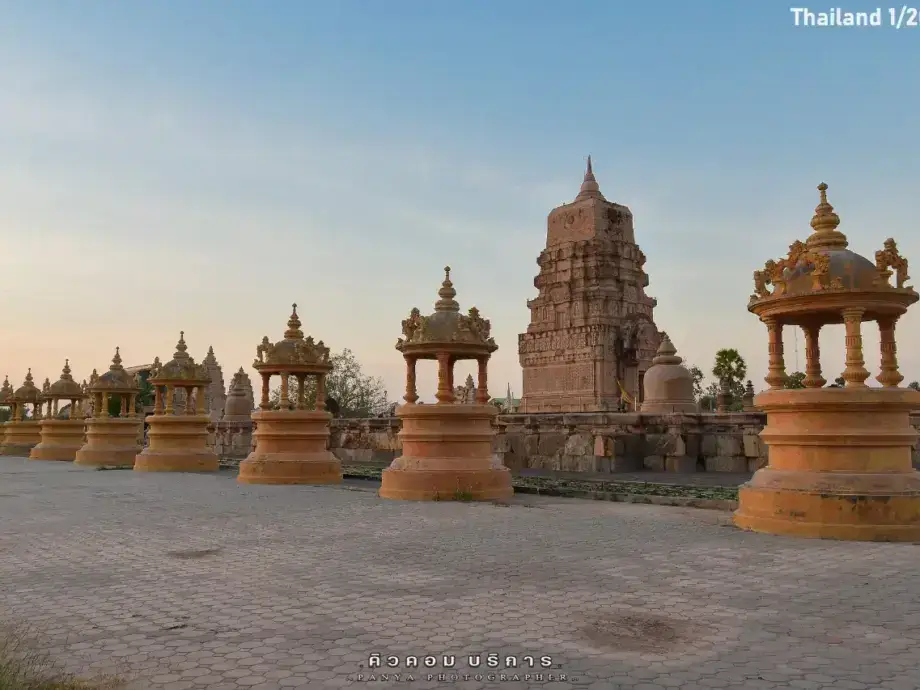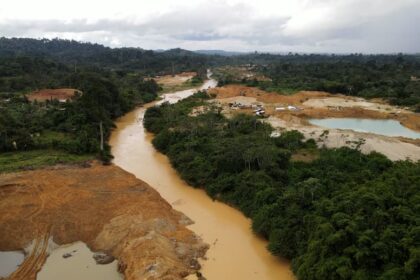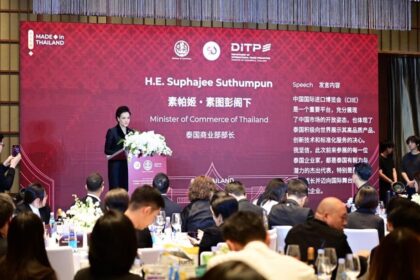Introduction: A New Front in the Thai-Cambodian Dispute
As border tensions between Thailand and Cambodia escalate, a fresh controversy has erupted—this time over cultural heritage. Cambodia has formally accused Thailand of copying the design of its iconic Angkor Wat temple in the construction of a new temple complex, Wat Phu Man Fa, in Buri Ram province, northeast Thailand. The dispute, which has simmered since 2020, has now reached the national stage, intertwining issues of cultural identity, international law, and regional politics.
- Introduction: A New Front in the Thai-Cambodian Dispute
- Angkor Wat: A Symbol of Cambodian Identity
- The Controversy: Wat Phu Man Fa and the Sihanakhon Complex
- Thai Response: Shared Heritage or Cultural Appropriation?
- Public Reaction and Nationalist Sentiment
- Historical Context: A Legacy of Rivalry and Shared Heritage
- International Law and the UNESCO Convention
- Recurring Allegations of Cultural Appropriation
- The Broader Impact: Nationalism, Politics, and Economic Fallout
- Looted Heritage: The Global Dimension of Cambodian Cultural Theft
- Expert Perspectives: The Stakes of Cultural Ownership
- Pathways to Resolution: Dialogue and Cooperation
- In Summary
Angkor Wat: A Symbol of Cambodian Identity
Angkor Wat, located in Siem Reap, Cambodia, is not just a UNESCO World Heritage site but a powerful symbol of Khmer civilization and national pride. Built in the early 12th century by King Suryavarman II, the temple complex originally honored the Hindu god Vishnu before becoming a Buddhist site. Its intricate stone carvings and grand scale have made it one of the world’s most celebrated religious monuments, even appearing on Cambodia’s national flag.
For Cambodians, Angkor Wat is more than an architectural marvel—it is the soul of the nation, representing centuries of history, spiritual devotion, and cultural achievement. The temple’s status as a world heritage site underscores its universal value and the responsibility of all nations to protect its integrity.
The Controversy: Wat Phu Man Fa and the Sihanakhon Complex
The current dispute centers on the Sihanakhon temple complex within Wat Phu Man Fa, a sprawling 32-hectare site in Thailand’s Buri Ram province, near the Cambodian border. Construction began in 2020, with a reported budget of 100 million baht (about US$3 million). Cambodian officials, led by Minister of Culture and Fine Arts Phoeurng Sackona, have condemned the project as a “blatant infringement upon Cambodia’s national identity and cultural soul.”
During a national meeting on historical site preservation, Sackona argued that the replication of Angkor Wat’s architectural blueprint “undermines the outstanding universal value and authenticity of Angkor Wat.” She further claimed that the project violates the 1972 UNESCO World Heritage Convention, to which both Thailand and Cambodia are signatories. According to the convention, member states must respect the sovereignty of cultural heritage sites and refrain from actions that could harm their value or authenticity.
Thai Response: Shared Heritage or Cultural Appropriation?
Thai officials and the abbot who designed Wat Phu Man Fa have rejected accusations of plagiarism. They argue that the temple’s design, while inspired by ancient Khmer art, is not an exact replica of Angkor Wat and reflects the region’s shared architectural history. Somsak Sungwarajitto, the abbot, maintains that the temple is a celebration of Buddhist traditions and not a direct imitation of the Cambodian site.
Khattiya Chaimanee, a local cultural official, told The Guardian in 2021 that similar architectural styles can be found throughout the Isan region of northeast Thailand, which has deep historical ties to the Khmer Empire. Even a 2021 Cambodian press release acknowledged that the complex was not a direct copy of Angkor Wat or any other Cambodian temple.
Public Reaction and Nationalist Sentiment
The controversy has ignited fierce debates on social media and in public forums in both countries. In Cambodia, many see the Thai temple as an affront to their national heritage, with some calling for UNESCO intervention. Thuy Chanthourn, an archaeologist at the Royal Academy of Cambodia, urged the government to file a formal complaint, stating:
“Out of excessive admiration, Thailand has copied the design and style to build on its own territory, violating international law. It reflects poorly on creativity and innovation. They should create something original, something of their own design.”
On the Thai side, reactions are mixed. Some Thais argue that Khmer art is an integral part of their own cultural heritage, given the historical overlap between the two nations. Others believe Cambodia is overreacting or using the issue for political leverage amid ongoing border disputes.
Historical Context: A Legacy of Rivalry and Shared Heritage
The roots of the current dispute run deep. Thailand and Cambodia share a long, complex history marked by shifting borders, wars, and cultural exchange. The Khmer Empire, which flourished from the 9th to the 15th centuries, once encompassed large parts of present-day Thailand, Laos, and Vietnam. Many ancient temples and architectural styles found in Thailand today are direct legacies of this era.
However, this shared heritage has often been a source of conflict rather than cooperation. Disputes over the ownership and interpretation of cultural symbols have repeatedly flared, sometimes with violent consequences. In 2003, riots in Phnom Penh over alleged remarks about Angkor Wat led to the destruction of the Thai embassy and Thai businesses. The Preah Vihear temple, another ancient Khmer site on the border, has been the subject of deadly clashes and international legal battles, with the International Court of Justice ultimately awarding it to Cambodia.
International Law and the UNESCO Convention
The 1972 UNESCO World Heritage Convention is central to Cambodia’s argument. The convention obliges member states to protect the cultural and natural heritage within their territories and to respect the sovereignty of other states’ heritage sites. Article 6 specifically prohibits deliberate actions that could damage the heritage of another state party.
Cambodia contends that the construction of a temple closely resembling Angkor Wat, without its permission, constitutes a violation of these principles. The Cambodian government has previously objected to similar projects, including a proposed Angkor Wat replica in India, which was ultimately canceled after diplomatic intervention.
However, the application of international law in cases of architectural inspiration versus direct replication is complex. While UNESCO can mediate disputes and issue recommendations, enforcement relies on the cooperation and goodwill of member states.
Recurring Allegations of Cultural Appropriation
This is not the first time Thailand has faced accusations of appropriating Cambodian cultural heritage. In addition to the current temple dispute, controversies have arisen over the use of Angkor Wat’s image in Thai films and the design of hotels and tourist attractions. For example, a hotel on Koh Phangan, Thailand, sparked outrage for its Angkor Wat-inspired architecture, prompting an apology from its Cambodian owner and a debate over the line between homage and appropriation.
Such incidents often trigger nationalist sentiment and online “keyboard wars,” with both sides accusing each other of cultural theft or historical revisionism. These disputes are fueled by deep-seated historical grievances and amplified by social media, making reconciliation more challenging.
The Broader Impact: Nationalism, Politics, and Economic Fallout
The cultural dispute over Angkor Wat’s design is unfolding against a backdrop of heightened political and military tensions. In May 2024, a Cambodian soldier was killed in a border clash, leading to tit-for-tat measures: Thailand imposed restrictions on cross-border travel, while Cambodia banned certain Thai imports and entertainment. Several border crossings have been closed, disrupting trade and tourism.
These actions have significant economic consequences. Thailand is Cambodia’s largest source of foreign tourists, and the sudden drop in Thai visitors threatens Cambodia’s tourism-dependent economy. Border traders and merchants on both sides are suffering, and the fate of hundreds of thousands of Cambodian migrant workers in Thailand hangs in the balance.
Nationalist rhetoric has also intensified, with political factions in both countries using the dispute to rally support or undermine rivals. In Thailand, critics accuse the government of being too conciliatory toward Cambodia, while Cambodian leaders emphasize their nation’s sovereignty and cultural pride.
Looted Heritage: The Global Dimension of Cambodian Cultural Theft
The debate over architectural imitation is part of a larger struggle to protect and reclaim Cambodian cultural heritage. For decades, Cambodia’s temples have been targets of looting, with thousands of artifacts smuggled abroad and sold to private collectors and major museums. The most notorious figure in this illicit trade was Douglas Latchford, a British dealer based in Thailand, who amassed and sold a vast collection of Khmer antiquities.
Latchford’s activities, which spanned from the 1970s to the 2010s, were facilitated by political instability, war, and poverty in Cambodia. Looters, often former soldiers or villagers, would extract statues and relics from temple sites—sometimes using dynamite—and transport them across the border. Latchford and his associates then sold these treasures to buyers worldwide, often using forged documents to obscure their origins.
In recent years, Cambodian authorities, with the help of international investigators, have made significant progress in tracking down and repatriating stolen artifacts. High-profile cases have led to the return of major pieces from museums such as the Metropolitan Museum of Art in New York and private collections. However, many looted items remain unaccounted for, and the process of recovery is slow and fraught with legal and diplomatic challenges.
Expert Perspectives: The Stakes of Cultural Ownership
Experts emphasize that cultural heritage is not just about physical artifacts or architectural styles—it is about identity, memory, and the right of communities to define and protect their own history. Phoeurng Sackona, Cambodia’s Minister of Culture and Fine Arts, has been a leading voice in the campaign to recover stolen heritage and prevent further appropriation:
“These objects are not just decorations, but have spirits and are considered as lives. It is hard to quantify their loss to our temples and country—losing them was like losing the spirits of our ancestors.”
At the same time, some scholars note that the boundaries of cultural ownership are often blurred, especially in regions with centuries of shared history and migration. The Khmer Empire’s influence extended across much of Southeast Asia, and its artistic legacy is visible in many countries. The challenge lies in balancing respect for national identity with recognition of shared heritage.
Pathways to Resolution: Dialogue and Cooperation
While the current dispute has inflamed nationalist passions, there are calls for moderation and dialogue. Both Thailand and Cambodia are members of UNESCO and have mechanisms for bilateral and multilateral cooperation on heritage issues. Experts suggest that joint efforts to document, preserve, and promote shared cultural sites could help defuse tensions and foster mutual understanding.
Some propose that rather than focusing on accusations and legal battles, the two countries could collaborate on educational programs, cultural exchanges, and tourism initiatives that highlight their intertwined histories. Such approaches would require political will and a commitment to moving beyond zero-sum narratives of ownership and appropriation.
In Summary
- The construction of Wat Phu Man Fa in Thailand, with a temple complex resembling Angkor Wat, has sparked a major cultural dispute with Cambodia.
- Cambodia accuses Thailand of violating its cultural sovereignty and the UNESCO World Heritage Convention, while Thai officials deny intentional imitation.
- The controversy is rooted in a long history of rivalry, shared heritage, and disputes over cultural symbols between the two nations.
- Nationalist sentiment and political tensions have intensified, with economic and social consequences for both countries.
- The issue is part of a broader struggle to protect Cambodian heritage from looting, appropriation, and illicit trade.
- Experts call for dialogue, cooperation, and respect for both national identity and shared history as pathways to resolution.












